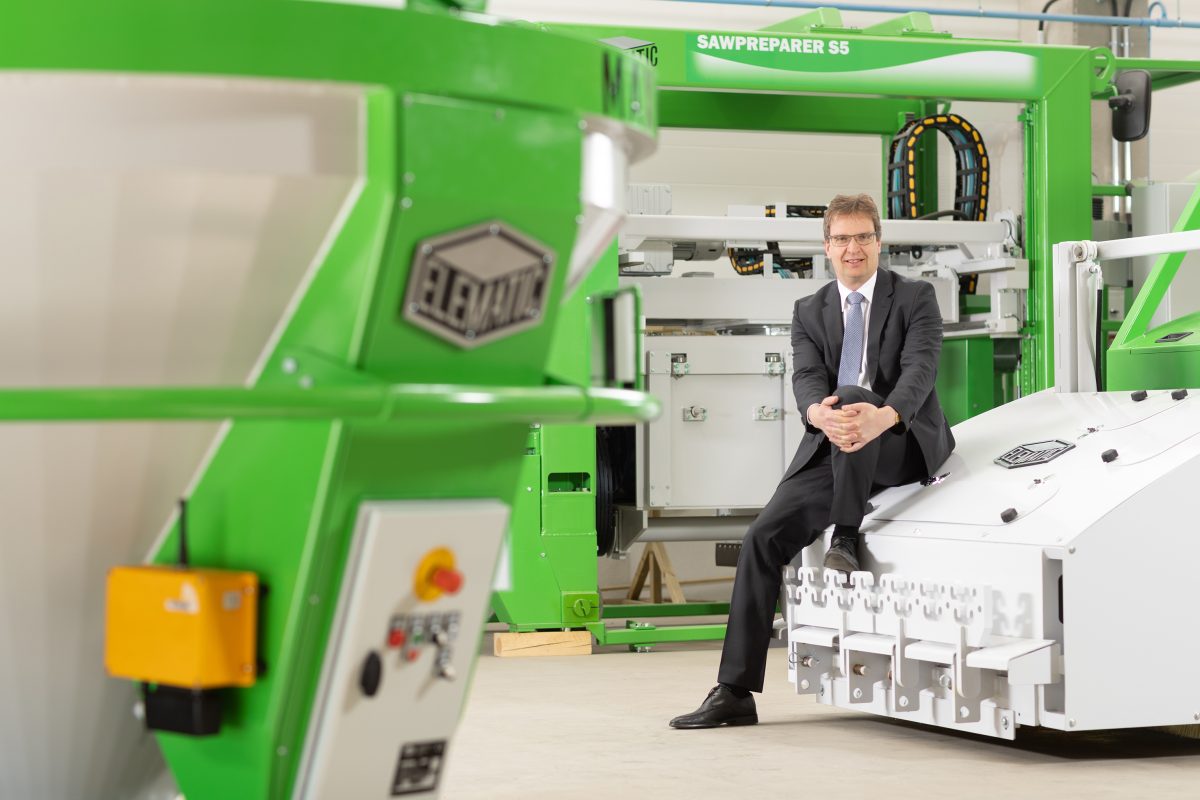
By Mats Jungar, CEO, Elematic, Oyj
Are you pondering what the year of 2019 brings to the precast industry? Or what issues should be considered during future precast production? Here’s my view on some of the major trends in the precast business that have increased in importance over the past few years.
Sustainable precast
Climate change, lack of pure water, heavy storms, diminishing raw material resources are constantly all over the news, guiding us to appreciate green values and forcing companies to change the way they do business – and the precast industry is no exception.
There is a growing demand for sustainable construction from different parties; the governments, citizens and global communities. This challenges the designers, builders and the precast industry. For us, this development actually presents a good opportunity to highlight the benefits of precast construction, share the information and facts, and convince authorities that precast concrete is the future of building construction. We should explain that compared to cast-in-situ, precast uses less of everything – less water, less steel and less cement. Less waste is also produced in the factory production process, together with lower logistics needs. In addition, precast plants can have a closed water circulation, which helps to save vital clean water.
There are many ways to make precast production even more sustainable. One of the major possibilities arises from the use of materials and new and modern machinery. Why? The answer is simple – new machinery is designed to be cost-efficient, meaning that less material goes to waste.
For example, Elematic’s new Plotter draws required openings accurately on hollow-core slabs, so that slabs are not wasted due to measurement or marking errors. Also, our Extruders are equipped with efficient shear compaction technology, which results in minimised cement usage and consistent high-quality production – again, fewer slabs are scrapped so materials are not wasted because of production errors. Concrete recycling is another upcoming trend that will improve raw material efficiency in precast production.
Making safety the priority
Safety should be the priority when doing business, because it not only impacts the lives of the people, but also the reputation of the company. New employees are much more likely to apply to companies that care about the safety of their people and operations.
Whenever we here at Elematic further develop existing machinery or innovate something completely new, we pay close attention to safety aspects. We want to assist in making your precast plant a safer place to work, to avoid immediate dangers, but also safeguard the lives of personnel and the factory lifecycle. Therefore, our latest machine models are equipped with various solutions to reduce occupational accidents and safety risks, for example, movement sensors, auto-stop function and tools for safe lifting. It is also crucial to limit the amount of respirable silica dust – as we know; silica dust is one of the major dangers at precast plants.
Traditionally, the precast industry has lagged behind other sectors regarding factory safety. However, now that the future of precast business looks promising, there should be a good opportunity to dispose of old, often dangerous solutions still existing in many plants around the world. Frontrunners in the industry are investing in factory safety, which can also be seen as a competitive advantage. I believe that our industry should promote safety not only by using precast as the building construction technology, but also by using new and modern production solutions that truly make a difference.
Digitalisation as an opportunity
Digitalisation has impacted our lives on many fronts – through the introduction of smart devices, electric cars and IoT. The precast industry has not been at the forefront in adopting new digital solutions, but now we see great potential for factory digitalisation in the form of automated machinery and optimised production planning.
If you want to take a step towards digitalising your precast plant, the easiest way is to start with production planning, because it creates the basis for further digitalisation. This may mean, for example, quality control, storage yard management or truckload planning. However, before being able to implement any of these, production planning is required; to know what is produced, when it is produced and how efficiently you utilise the capacity available.
Digitalisation is impacting the precast business and offers considerable savings not only by making the production more efficient, but also by taking care of the safety of employees and in attracting skilled labor. Automated processes are also ideal for ensuring consistent quality throughout the production chain. The benefits are not limited to the precast plant, because the whole construction project can be digitalised from the original designs all the way to the construction sites, and beyond to the entire lifecycle of the building.
About Elematic Oyj
Elematic Oyj is a world-leading manufacturer of precast concrete plants and production lines. In over 50 years of operation, we have supplied technology to more than 100 countries and to every continent. Turnover is approximately 100 million euros, of which exports generate 95%, and the company employs roughly 230 people. Elematic has subsidiaries and sales offices in the USA, Germany, China, Russia, India, Hong Kong and the United Arab Emirates, and agents in over 20 countries. The company headquarters is located in Akaa, Finland, and its production units are in Finland and India. Elematic has an ISO 9001 certified quality system and the international quality certificate Investor in People for the development of personnel.
More information from Nina Lehtonen, email: [email protected] / www.elematic.com

